I'm stranded in lovely Lyon for this week, and so present some notes from a recent session back at home. If any readers are down here in the south of France, do let me know!
The Liudachashan (Six Big Tea Mountains) Tea Co. used to make some delicious tea. I have a half-tong of the 2002 Zhangxiang [camphor scent] and of the 2003 Jingmai Pangxiejiao [crab foot], with random cakes of the 2003 Lincang and 2003 Youle. These range from the simple and delicious to the complex and delicious. Many thanks to Keng for introducing me to these very solid 6FTM examples.
Liushan Shoucang Laochabing
Gedengshan is in Mengla County of Xishuangbanna - the county that also contains Yibangshan, Youleshan, Manzhuanshan, and Mangzhishan.
Something odd has happened to me of late. The geography of Yunnan has "clicked" into my mind, and suddenly the places and names seem less abstract, and associated with particular locations, the relationships between which I can chart with the various cakes that I have encountered. Suddenly it all makes a great deal of sense, and I find myself having to check my maps marginally less regularly than before.
If we think of the main tea prefecture, Xishuangbanna, as being, say, Texas (relative to the rest of the US, which is Yunnan in this simile), then Mengla County is in the south-east corner. It sticks out into Laos. In the local dialect of Banna's ethnic group, the Dai, Mengla simply means "tea district".
The wrapper reads "Liushan Shoucang Laochabing", or six-mountains collector old-tea cake, in large characters (shown in the uppermost image).
Just looking at the cake makes me thirsty. As with the other 6FTM productions from this era, it is rough, dirty, loosely compressed, and entirely appealing as a result. The shaggy edges and large leaves do it proud.
The large, flat leaves have darkened well, as you may see in the photographs above and below, and there is a distinctly humid aroma about them, courtesy, I assume, of the default storage in Singapore. The hot, humid environment seems to act most favourably to the tea's benefit, in its idiosyncratic manner.
The soup is a heavy red-orange, as shown below. It has a thin yellow miniscus about it already, further testament to Singaporean goodness.
As I hoped, it is a vivid and sharp tea, with plenty of excellent woodiness about it. The kuwei resides in the throat like a grumpy old man propping up the bar, refusing to budge at the end of the night. Its woodiness is of a pine-like variety. Entirely delicious.
Sweet and smooth, it continues well. By the time the eleventh infusion comes around, we are brewing for substantial periods, in order to wring every last bit of oomph out of the leaves.
Turning them out of the pot afterwards reveals their large, fragmented appearance, and well-aged colouration.
In parallel, I drink the remainder of the 1980s qingbing, so generously provided by Keng. It has provided many dozen infusions, brewing long and slowly in Gertrude, my celadon / qingzi gaiwan (shown below).
My suggestion is to keep your eyes peeled for older 6FTM cakes (perhaps before 2005). They look rustic and simplistic, they're often priced very reasonably, and yet they can provide enjoyment far beyond the modest asking price might otherwise suggest. If you favour a little humidity in your storage, then you may factor that into your decision, too. A quick trip to Taobao might yield successful results, were you of the mind to try it.
Thanks again to Keng - fun stuff, and a lovely session.



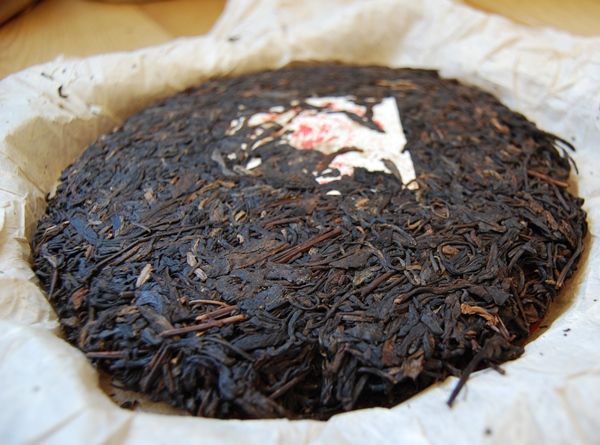
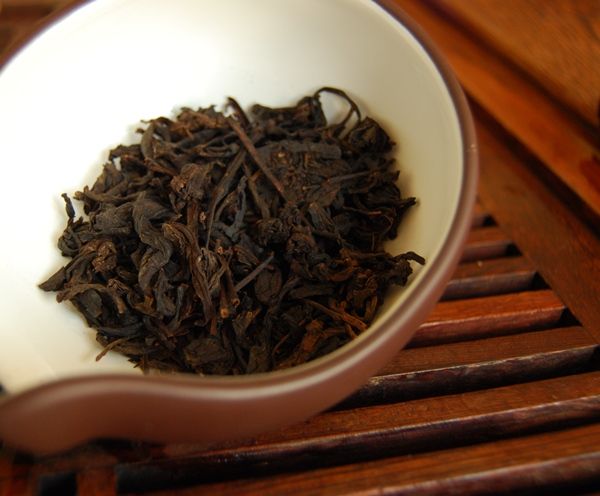
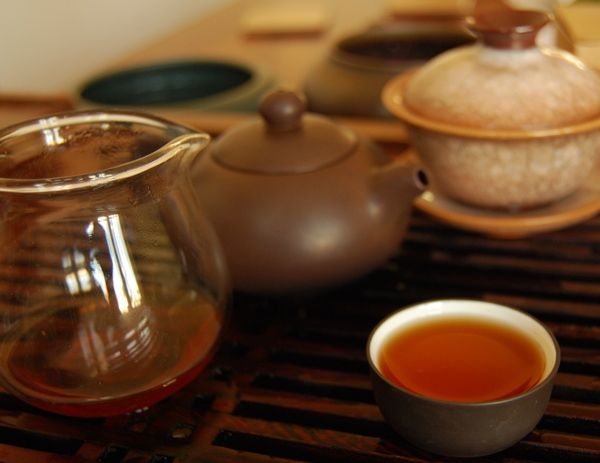
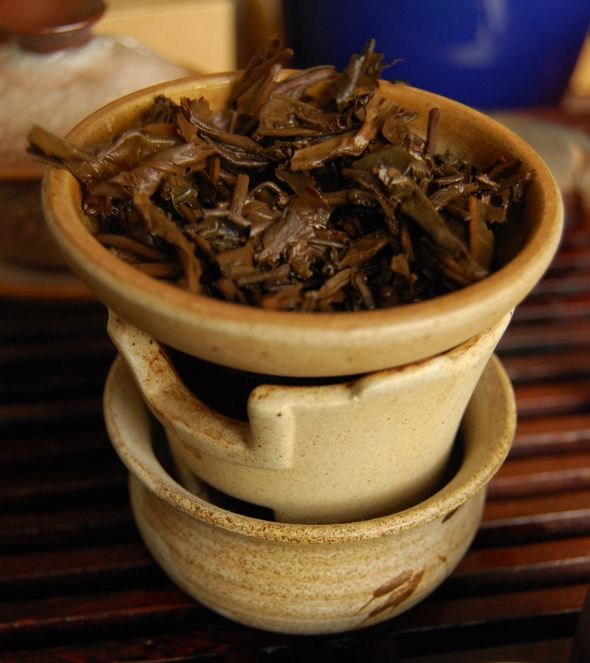
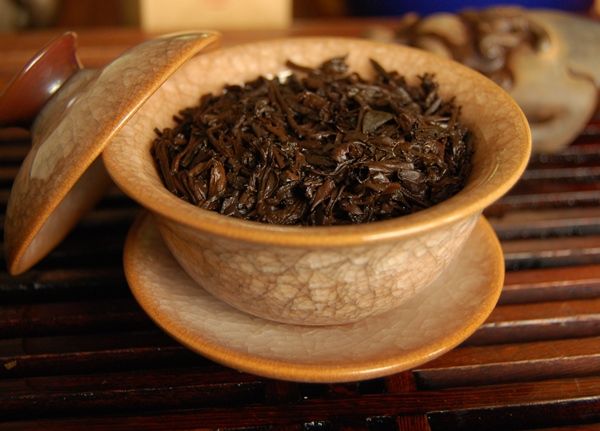
Hello Hobbes,
ReplyDeleteI do live one and a half hour from Lyon (by car). And because I have quite a lot of time at the moment, it would be nice to have some time together talking tea and maybe sipping a cup if we find a way.
Tell me what's your plans and plannings for the following days and I'll see what is possible.
I ain't got so many Great pu'ers but do have some fair ones you might not know and some nice wulongs.
Fabien (living near Geneva, on the french side)
Dear Fabien,
ReplyDeleteGeneva is a lovely place to live! Thanks very much for writing. The bad news is that the two conferences I'm here to visit have just given me their respective schedules, which are from 8 a.m. - 8.30 p.m. each day; I'm afraid that this will give me no time at all outside the conference venues, much to my surprise and consequent disappointment. It seems I come back here fairly regularly, and so look forward to the next opportunity to drink some tea with you.
A bientot,
Hobbes
P.s. It really is hot down here!
This cake is one I am familiar with. I purchased it from 6FTM store here in Kunming in early 2005. Ruan Dian Rong told me the mao cha is from 1999 harvest and that the smoky flavor is from being stored in Gedeng area homes for several years before being pressed in 2004.
ReplyDeleteIt's quite an old tea... the smell southern Yunnan cooking still sits in it!
- Scott
Dear Scott,
ReplyDeleteSuperb info, thanks - I can believe it is a 1999 maocha, given its character.
The smell of Chinese food in the bing... an unexpected bonus. ;)
Toodlepip,
Hobbes
I use a steel made pot for these dried leaves, with a screen on the cover then just have to wait for few minutes for the tea mix with the water.
ReplyDeleteHobbes,
ReplyDeleteWhenever you're in the area, just tell me and I'm sure we'll manage to share some tea.
Enjoy your time in Lyon.
Fabien
Looking forward to it, Fabien :)
ReplyDelete